12 Growth Hacking Tools Every Startup Needs
Explore 12 essential growth hacking tools that every startup should consider for achieving marketing success.
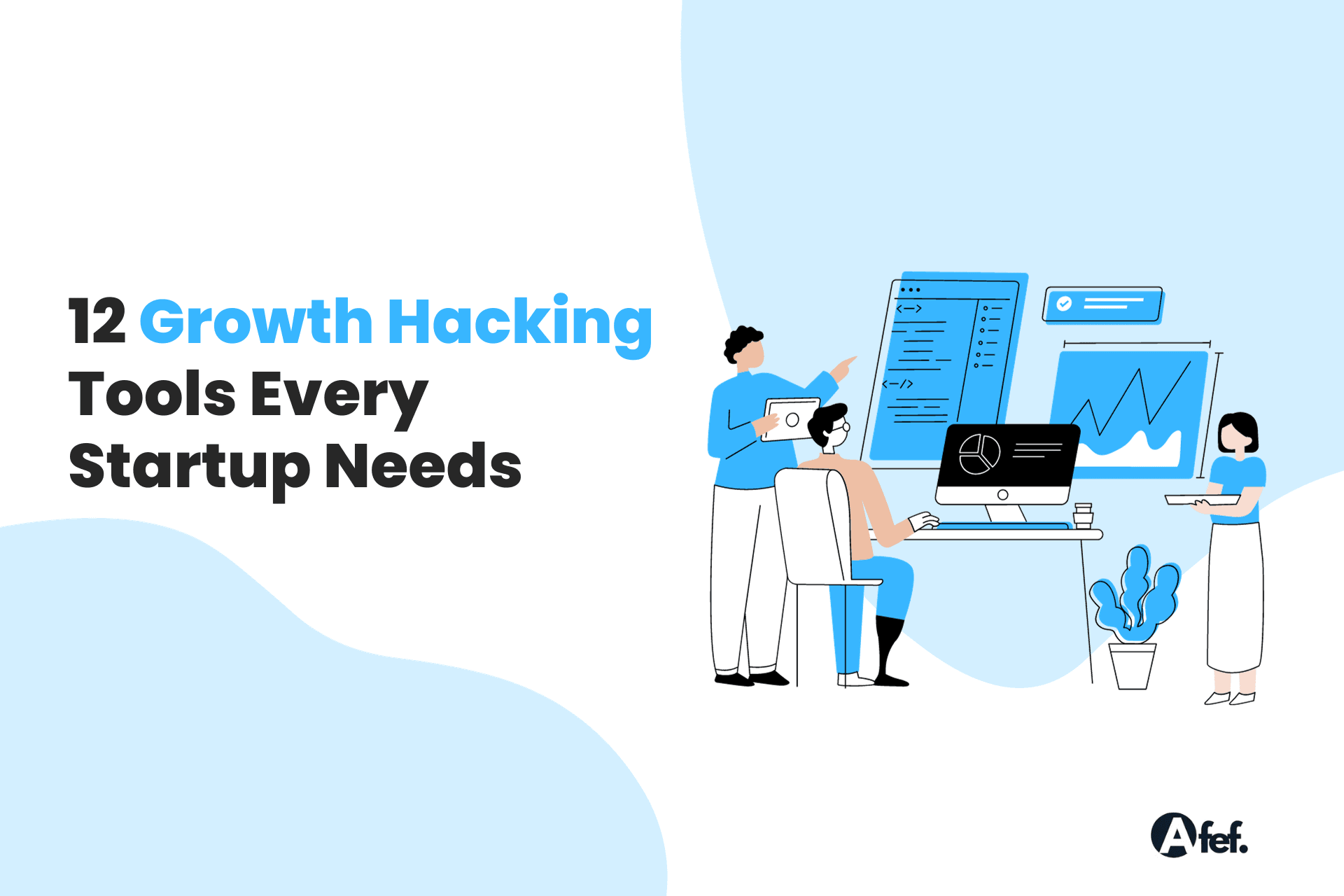
12 Growth Hacking Tools Every Startup Needs
Growth hacking is the most popular marketing trend at the moment. More and more startups are using different growth hacking tricks to outpace their competitors. There are hundreds of tools to choose from, with new ones appearing all the time. This post is an attempt to list most integral growth hacking tools for startups, taking into account the most useful metrics, activations rates and customer engagement improvements.
In this list, we're sharing with you 12 growth hacking tools, extensions and plug-ins that we tend to use in 2023 or which we would always advise to our clients.
1. Hotjar
 We use Hotjar for our own website, as well as for clients. With Hotjar you can see where your visitors are coming from, where they click and scroll, what devices they are using, and even which parts of your page they are skipping.
We use Hotjar for our own website, as well as for clients. With Hotjar you can see where your visitors are coming from, where they click and scroll, what devices they are using, and even which parts of your page they are skipping.
As growth hackers, we rarely like to use the tools we know best. Years ago, we had created our own very simple heatmap tool. However as the site grew, and we wanted more functionality, we used Hotjar. For one of our clients, we used Hotjar from the start, and we've never looked back. After implementing Hotjar, we saw huge increases in conversions, page views, and time on site. Hotjar also offers more advanced tools like session replays, recordings, and form analytics. This enables you to better understand your users and provide an even better site experience.
The tool also gives you lots of information about which parts of your website are performing best, and which are causing problems. This enables you to make more informed decisions about what to focus on next.
2. Zapier
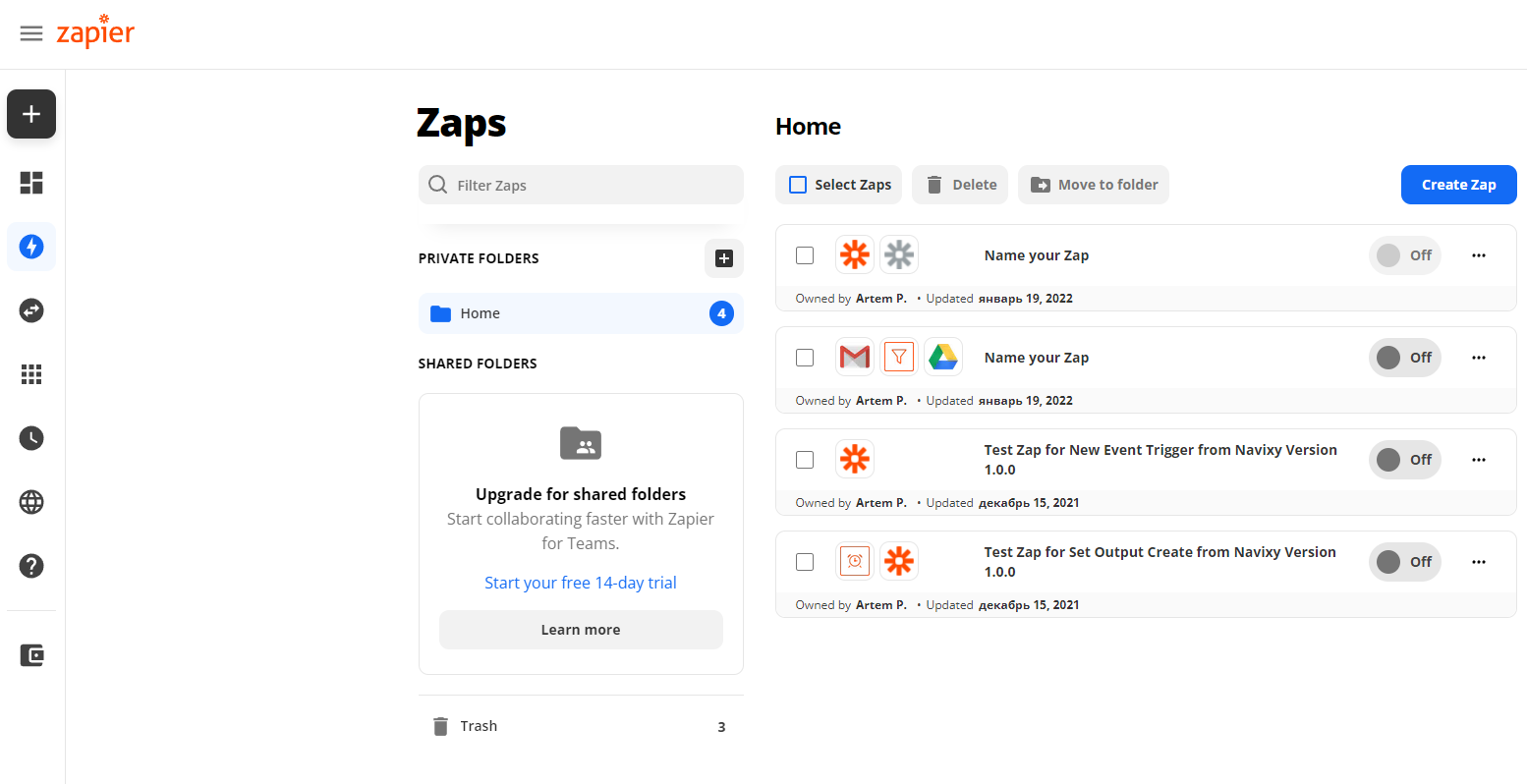 We're always looking for ways to better automate our marketing, after all we're automation geeks, by doing this we can be more efficient. It saves us time and energy and allows us to focus on the main business.
We're always looking for ways to better automate our marketing, after all we're automation geeks, by doing this we can be more efficient. It saves us time and energy and allows us to focus on the main business.
Zapier is the best integration platform out there. It allows you to easily connect 1,000+ marketing apps to each other. It automates tedious marketing tasks so you can focus on building your business.
It's possible to automate almost anything with Zapier. For example, you could automatically create an email campaign in MailChimp every time a new subscriber is added to your Facebook group. You could send new Facebook fans an email with a link to your Facebook group after they make a purchase. You could notify a Twitter follower about a new blog post whenever you publish a new post on your blog.
3. Hellobar
 so with Hello Bar you can create an attractive bar at the top of your website that will link to any URL you'd like, or you can use Hello Bar to collect emails. This means that you can share your promotion, product, or service right where you want it--on your website.
so with Hello Bar you can create an attractive bar at the top of your website that will link to any URL you'd like, or you can use Hello Bar to collect emails. This means that you can share your promotion, product, or service right where you want it--on your website.
Hello Bar's main page has a vast array of different bars and CTAs to choose from, which allow you to promote a lead magnet, drive traffic to your blog posts, or display your social media links. And if you're looking to create something unique, you can create your own custom bar on the Hello Bar website.
4. Buzzsumo
 using Buzzsumo, you can see which content has the highest engagement, and, more importantly, which ones your target audience is engaging with.
using Buzzsumo, you can see which content has the highest engagement, and, more importantly, which ones your target audience is engaging with.
Buzzsumo allows you to get tons of content insights that will help you shape your marketing strategy overall. With Buzzsumo, you can identify influencers and get ideas for content that may gain traction. Further, you can use this tool to identify influencers who publish content to your targeted users.
Here's what you can do with Buzzsumo:
- Discovering Content
- Find the most shared content, use Buzzsumo's Content Explorer. This powerful, yet easy-to-use tool shows the top content by searches, domains, and countries. You can also discover content by topic, audience, and source, or search by one or more keywords.
- Analysing Content
Buzzsumo's Content Analytics lets you analyse content to discover:
- Topics that your audience is interested in
- Top influencers
- Topics that generate the most social shares (shares, comments, likes)
- Topics that attract links (links, likes, comments, shares)
- Content that your competitors are linking to
- Content that your competitors are sharing
- Top content by topic
- Top content by source
- Content that your competitors are linking to
- Content that your competitors are sharing
- Content that your competitors are sharing the most
Built-In Tools
- Content Explorer
- Content Analytics
- Content Trends
- Influencers
- Topics
- Sources
- Keywords
- Competition
I mean... what else would you need for your content optimization?
5. Customer.io
 Customer.io is a great way to monitor your customer activity and send them personalized messages based on what they do on your website or mobile app.
Customer.io is a great way to monitor your customer activity and send them personalized messages based on what they do on your website or mobile app.
It's a growth hacking tool that provides you with a lot of data on your clients' activities. In addition, the tool gives you the opportunity to send targeted messages at desired times to make sure you can catch your audience when they are most likely open to receiving your message.
So how does it work?
Customer.io will allow you to automatically trigger e-mails or SMS messages whenever your potential customers do something specific on your site. Imagine if your business were a game. Customer.io is an advanced scoring system that tracks how players are doing. Whenever they complete step 12 out of 15, you score them 100 points! It's that simple!
Now, imagine that you can determine what each player specifically completed and then send that player a message based on their specific behavior.
6. Optimizely
 You have probably heard of A/B testing, in which you test two different versions of a page, such as different headlines or colors. Optimizely lets you do that and more. For example, you can test different versions of your page, different landing pages, different calls to action, different images, different texts, different forms, different product descriptions, etc. And choose the winning variants.
You have probably heard of A/B testing, in which you test two different versions of a page, such as different headlines or colors. Optimizely lets you do that and more. For example, you can test different versions of your page, different landing pages, different calls to action, different images, different texts, different forms, different product descriptions, etc. And choose the winning variants.
It's really important to test and optimise, otherwise, you won't reach performance. We remember one optimization we made on Optimizely was for a French health and wellness startup. That optimization yielded a 35% increase in conversions.
If you want growth, test, test and test...
7. Pushowl for Shopify stores
 Pushowl is an easy to use, effective retargeting tool that delivers messages directly to visitors. With Pushowl, you can create campaigns that target visitors based on location, behavior, past purchases, or custom audiences.
Pushowl is an easy to use, effective retargeting tool that delivers messages directly to visitors. With Pushowl, you can create campaigns that target visitors based on location, behavior, past purchases, or custom audiences.
It provides an easy, visual interface for creating campaigns. It's designed to be simple and painless so anyone can use it.
It also lets you schedule messages, track open rates, and create custom audiences. It lets you send push notifications to your visitors, as well as track their effectiveness. Its simple, effective retargeting tool helps you convert one-time visitors to loyal customers.
It's free for small businesses and we're 100% sure that the moment you add it to your Shopify store, you will get more sales.
8. Mailchimp
 With Mailchimp you have the power to reach out to your audience using newsletters, email automations, and campaigns that are relevant to each customer's group journey. The built-in audience segments give you the power to grow your audience by targeting the right people at the right time with campaigns based on similar behaviors or interests.
With Mailchimp you have the power to reach out to your audience using newsletters, email automations, and campaigns that are relevant to each customer's group journey. The built-in audience segments give you the power to grow your audience by targeting the right people at the right time with campaigns based on similar behaviors or interests.
You can combine these audience segments with powerful campaign designs for acquisition, or retention of course.
It's also easy to integrate it with different tools.
9. Unbounce
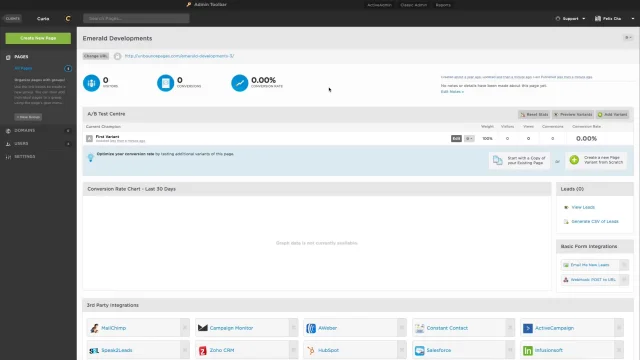 Unbounce lets you build and A/B test landing pages without ever having to write a line of code. You can publish landing pages and start testing in minutes – and wit can even let you collect email addresses for lead generation purposes. The Unbounce platform allows you to create and publish your landing pages and start running A/B tests, so you can see which pages convert the most visitors into leads.
Unbounce lets you build and A/B test landing pages without ever having to write a line of code. You can publish landing pages and start testing in minutes – and wit can even let you collect email addresses for lead generation purposes. The Unbounce platform allows you to create and publish your landing pages and start running A/B tests, so you can see which pages convert the most visitors into leads.
Whether you're launching a new product, sending out holiday sales emails, or have a new offer that you're trying to promote, Unbounce is the easy-to-use landing page service that helps you convert more visitors into customers. You can simply create beautiful pages in minutes without knowing how to code.
10. Hunter.io
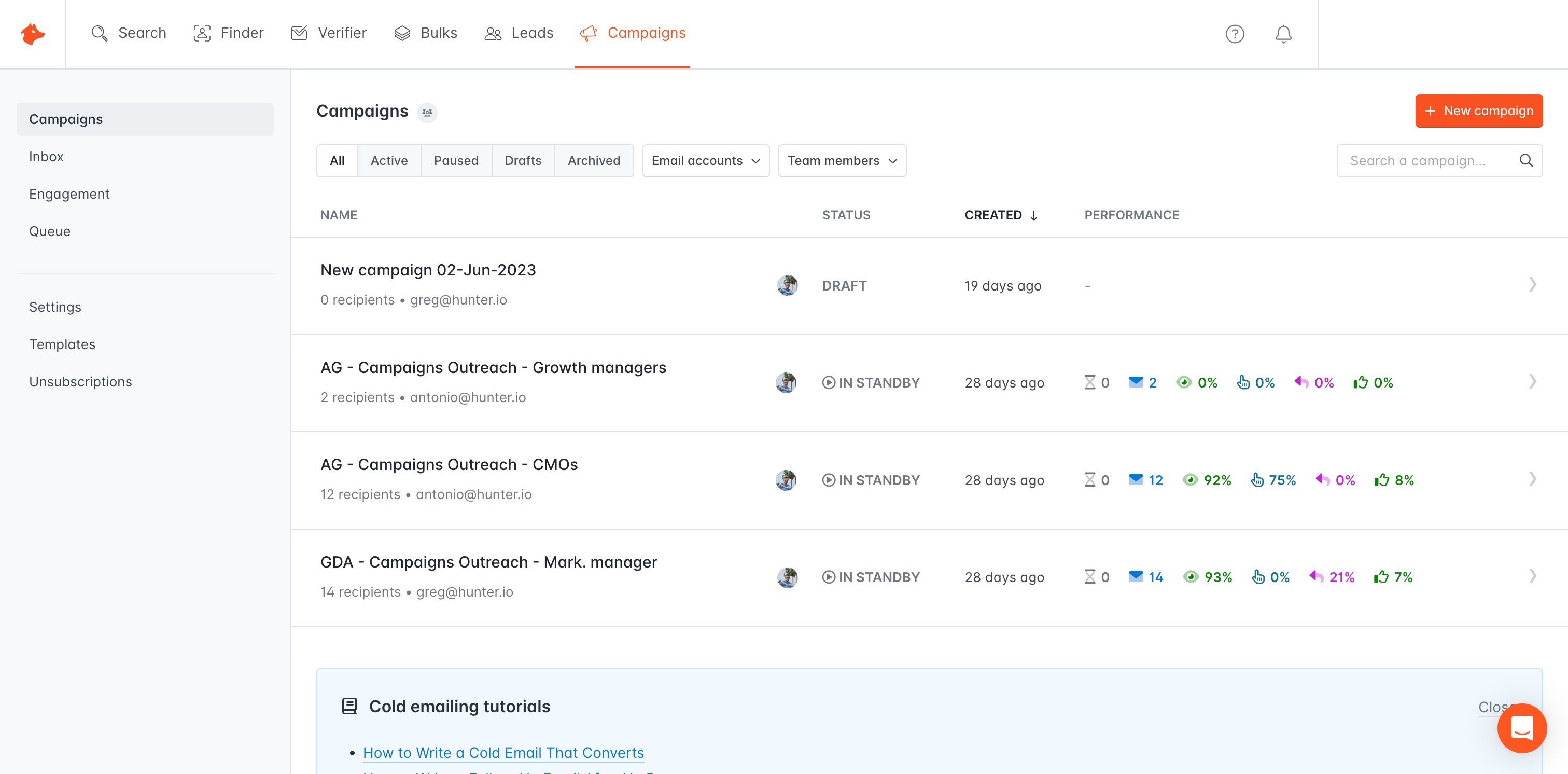 Hunter lets you find professional email addresses in seconds and connect with the people that matter for your business.
Hunter lets you find professional email addresses in seconds and connect with the people that matter for your business.
The Email Finder uses a large number of signals to find the proven or most probable email address of anyone in a fraction of second.
It's a great tool for prospecting, market research, and verifying emails. We personally used it for B2B prospecting (SaaS), and it helped us generating great leads and increasing revenue. It saves you time. and as a general rule, time is money!
11. Userflow
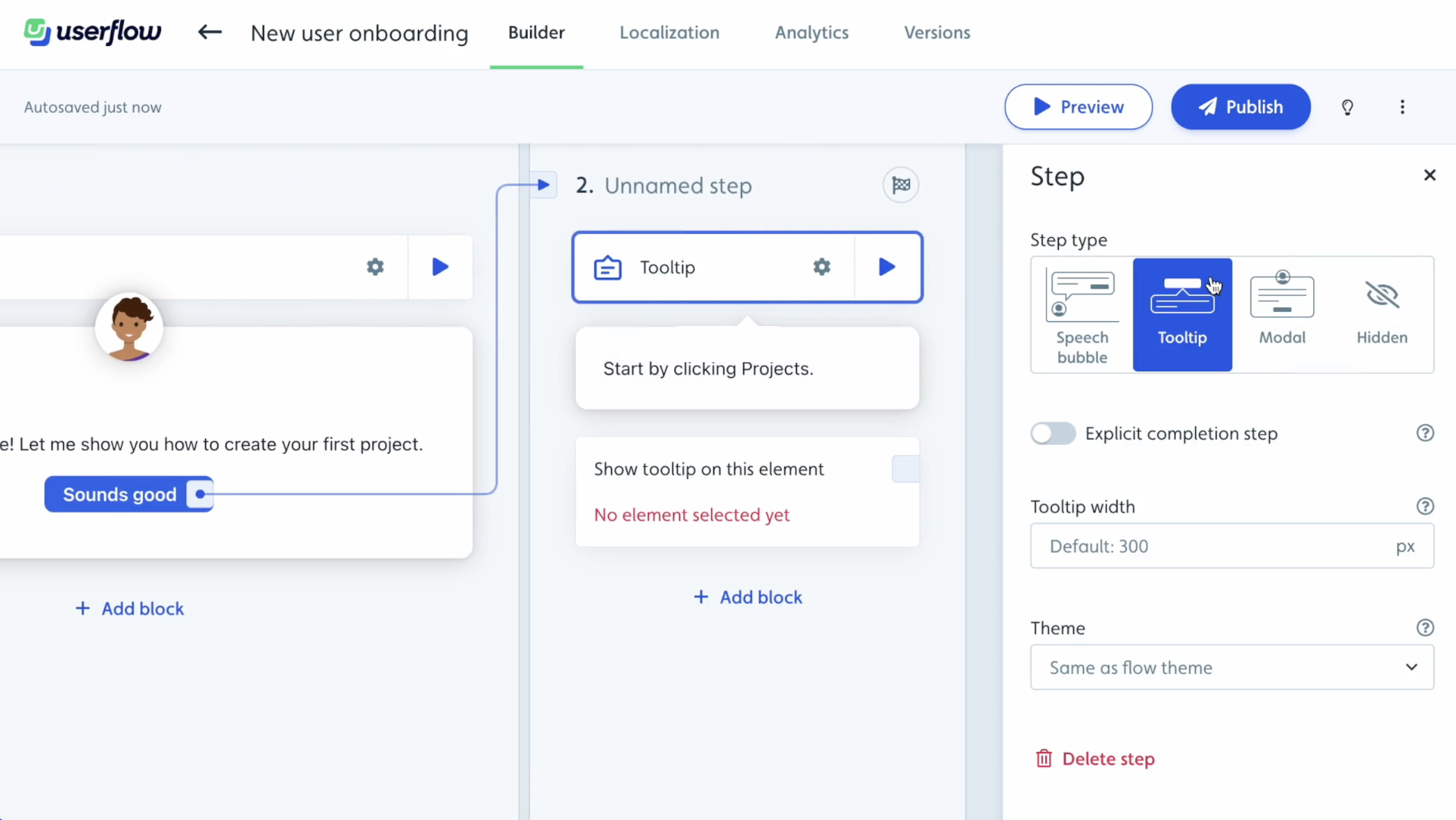 When you onboard a new user, it's so important that it's the first thing your users see. You have one chance to set a first impression, so make the most of it.
Userflow helps you build and customise onboarding experiences. You can build custom in-app tours, checklists and surveys.
When you onboard a new user, it's so important that it's the first thing your users see. You have one chance to set a first impression, so make the most of it.
Userflow helps you build and customise onboarding experiences. You can build custom in-app tours, checklists and surveys.
And you don't have to write any code!
In fact, you don't even need to know what HTML is. You do need a computer, though, and Internet. Just drag the elements you need onto the screen.
You can add animations and popups, videos and images, text and buttons. You can also generate custom captions for your elements.
Userflow is browser-based, so you don't need a Mac or PC and you can preview your creations in the browser before you publish them
12. Typeform
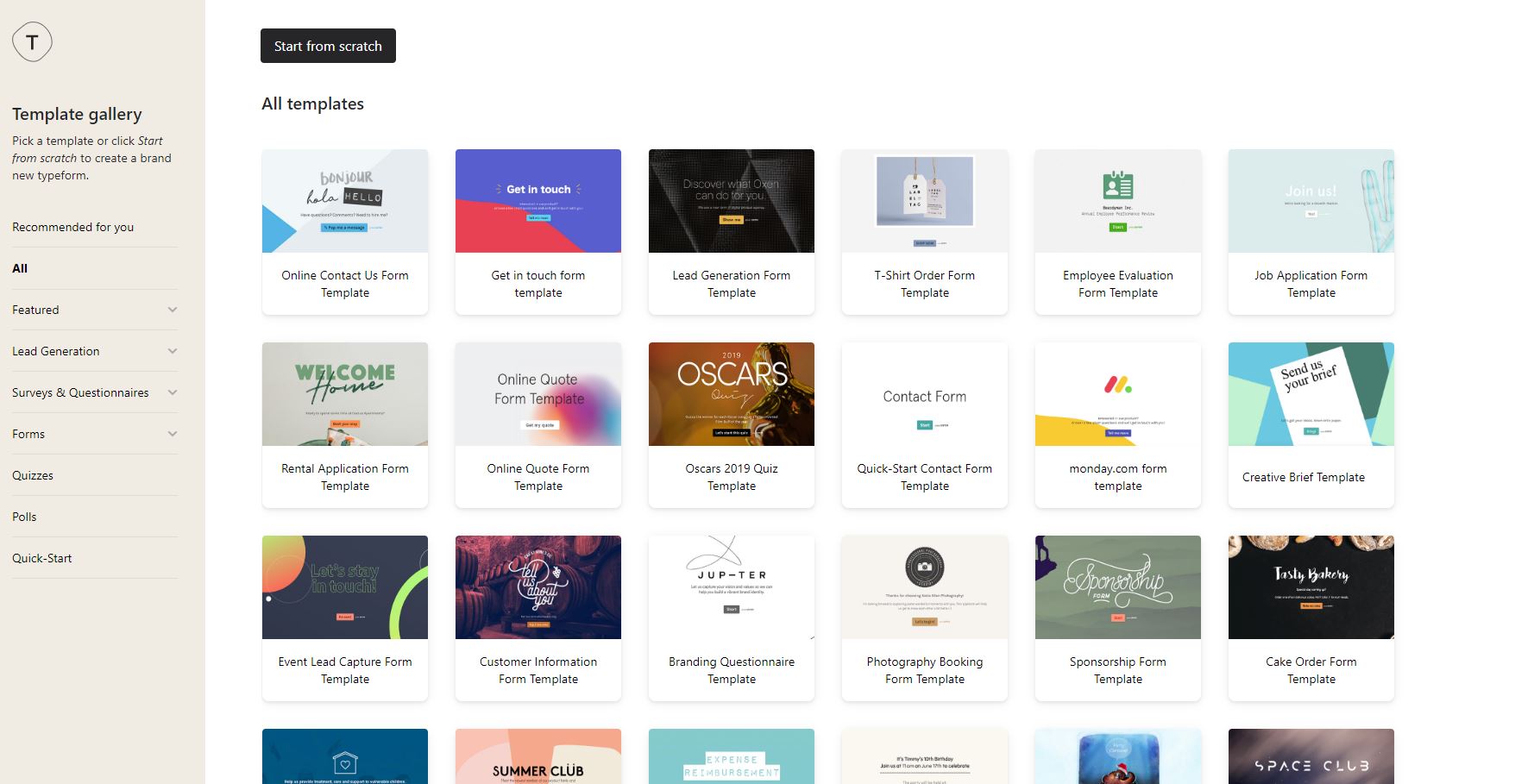 Typeform is the simplest, most beautiful way to design online forms. Use it to gather feedback, conduct interviews, put together lists, collect images or signatures. Collect data with confidence .
Typeform is the simplest, most beautiful way to design online forms. Use it to gather feedback, conduct interviews, put together lists, collect images or signatures. Collect data with confidence .
Its drag and drop feature allows you to create and design your survey in one place and publish instantly online. Making it easier than ever to collect data and insights from any crowd.
Typeform helps you make your questions more effective and easy for respondents to answer. In answering, they can add photos, links and other attachments. Not only does it help collect the data, but the survey itself becomes a positive brand experience.
13. UsabilityHub
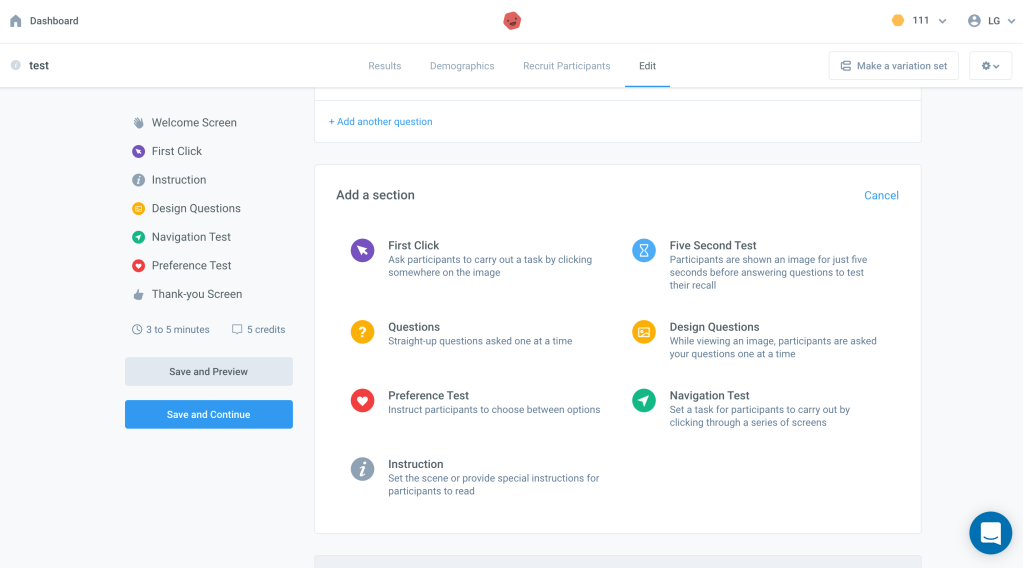 If you are looking for ways to improve your site's usability then this growth hacking tool is just the one you need. The platform has got lots of different tests that measure aspects of usability. While using this tool, we have found it to be extremely insightful and reliable.
If you are looking for ways to improve your site's usability then this growth hacking tool is just the one you need. The platform has got lots of different tests that measure aspects of usability. While using this tool, we have found it to be extremely insightful and reliable.
It helps us test various aspects of the website so that we know exactly what aspect should we improve on. You can also create specific tests to get the answers needed for improving your website's usability.
No matter your reason, no matter what growth hacking strategy you employ to reach the masses, using the best tools will help you sip from the cup of increased traffic and revenue Now you know a little more about 12 of the best growth hacking tools. You can pick and choose the ones that suit your business.
